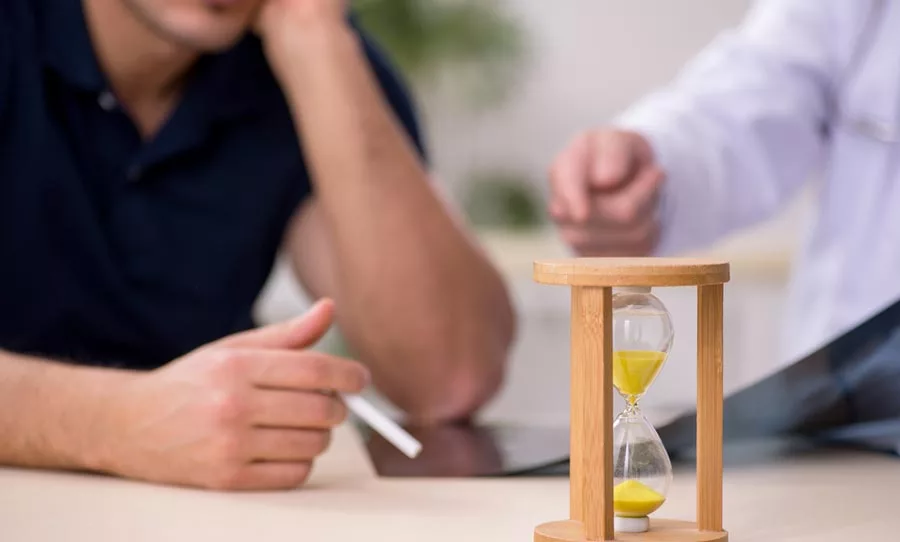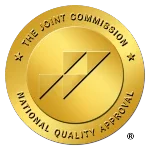Getting Help to Overcome Tramadol at Catalina
Many people’s stories about addiction start with an injury or a condition causing chronic pain. Even when prescription drugs are taken under the supervision of a doctor, that doesn’t always eliminate the risk of addiction. And, when you’ve stopped using and are experiencing tramadol withdrawal symptoms, it can be all too easy to look for something to take those symptoms away.
Even though tramadol is advertised as a medication that has a lower risk of addiction than typical opioids like morphine, addiction is still possible. In fact, Ultram dependence is a growing concern for many people, something you or your loved one may be all too familiar with.
So, where do you turn for help?
Catalina Behavioral Health is a safe haven for those struggling with substances and our expert team is ready and waiting to support your recovery from Tramadol.
At Catalina, we can provide the 24/7 support you need to break tramadol’s hold over you and help put the pieces in place for continued recovery after detox.
24 Hour Detox and Rehab Helpline – Call Now!
What are Ultram and Tramadol Used For?
Doctors prescribe tramadol for patients experiencing moderate to moderately severe pain. It may also be sold as Conzip or Ultram and under generic names. Tramadol belongs to the family of short-acting opioids, but it is also available in an extended-release formula for patients who have chronic or long-term pain.
Tramadol is an atypical opioid and works differently than morphine and other typical opioids. It works with more than just the mu receptors in the brain, which leads to a reduced risk of side effects compared to other opioids and a lower risk of addiction.
Since there is a reduced chance of addiction, tramadol is considered a Schedule IV controlled substance according to the Drug Enforcement Administration. However, the Substance Abuse and Mental Health Services Administration (SAMHSA) still considers tramadol to have a moderate risk of physical dependence.
How Does Tramadol Treat Pain?

According to the World Health Organization, tramadol is an opioid just like morphine, methadone, codeine, fentanyl, and heroin. Opioids like these are manufactured using compounds found in the poppy plant or synthetic or semi-synthetic compounds that mimic the effects. Tramadol specifically is a synthetic opioid. unlike other opioids, it’s considered a Schedule IV drug, meaning there is a lower risk of abuse and drug dependence.
When ingested, these compounds work with receptors in the brain to produce an analgesic and sedative effect. Tramadol acts as a pain blocker, disrupting pain signals between the body and the brain. Opioids are also known for their euphoric effects, which is one of the reasons that they may be abused.
Who Should Not Take Tramadol?
Tramadol is advertised as having a lower risk of addiction because it doesn’t rely on just one set of receptors in the brain to relieve pain. However, it is still not recommended for the treatment of long-term, chronic pain because of the risk of addiction. People who become dependent on Ultram show behavioral warning signs that are similar to heroin and other opiates.
Tramadol is also not recommended for people who take benzodiazepines, which also have a sedative effect. When paired together, the drugs cause respiratory depression and problems breathing.
Additionally, individuals taking serotonergic medications for depression should not use tramadol or use the lowest effective tramadol dose. When combined, these drugs can produce serotonin syndrome, a condition that can cause seizures.
The Most Common Symptoms of Tramadol Withdrawal

Tramadol withdrawal symptoms are similar to what you’d experience withdrawing from any type of opioid. Often, opioid withdrawal complications are compared to experiencing severe flu-like symptoms.
When these symptoms happen collectively, they’re sometimes called tramadol withdrawal syndrome. Some things you may experience with tramadol and other opioid withdrawal syndromes include:
- Runny nose, watery eyes, and sneezing
- Diarrhea
- Upset stomach, nausea, and vomiting
- Chills and goosebumps
- Sweating
- Body aches
- Pain
- Shivering and tremors
- Restlessness
- Insomnia
Symptoms of tramadol withdrawal mimic traditional opioid withdrawal symptoms, but they may be slightly different because tramadol is an atypical opioid. These symptoms are uncomfortable but usually won’t last longer than a week.
In most cases, withdrawal from tramadol or other opioid drugs starts within 12-24 hours of your last dose. While detox from tramadol is considered less intense than typical opioid withdrawal symptoms, there is still a risk of more severe symptoms.
More Serious Tramadol Withdrawal Symptoms
In some tramadol withdrawal cases, a person might experience more serious side effects that are atypical of opioid withdrawal symptoms. This can include:
- Tingling and numbness in the extremities
- Severe anxiety
- Panic attacks
- Confusion
- Hallucinations
- Paranoia
More severe withdrawal symptoms like panic attacks might feel like a heart attack and hallucinations and paranoia can cause behavioral changes. Even so, these common withdrawal symptoms are not life-threatening in most cases.
A Typical Timeline: What to Expect During Tramadol Detox

Sometimes, knowing what you’re up against can help you through the detox process. It’s helpful to know how long each stage will last so that you have the confidence to get through the symptoms and be sober on the other side.
During tramadol detox, the onset is going to depend on when your last dose was, the strength of the dose, and how long you have been taking tramadol for pain. In most cases, though, you can expect the onset of atypical symptoms of tramadol withdrawal to start within 12-24 hours of your final dose.
According to the typical withdrawal timeline, you are going to experience the most severe tramadol withdrawal symptoms in the first 3 days, and by the third day, symptoms usually peak. Most of the time, these tramadol withdrawal symptoms will subside completely within a week, though the drug cravings can last much longer.
Tramadol Tapering
If you talk to your doctor about stopping tramadol, they’ll likely recommend a tramadol taper. Tapering is going to make the tramadol withdrawal timeline longer, usually lasting a few weeks up to a few months depending on the dosage.
Tapering like this can ease withdrawal symptoms because you aren’t completely stopping your dosage at once. You still may experience withdrawal symptoms if you’ve developed opioid dependence, but they won’t be as intense.
Get Proven Opioid Withdrawal Support at Catalina!
How to Manage Opioid Withdrawal Symptoms
The best way to treat opioid withdrawal symptoms is to work with medical professionals during your detox. Many people with tramadol addiction consider residential treatment programs like the one offered at Catalina.
During medical detox, medications can be prescribed to decrease tramadol withdrawal effects. Tapering is another option, where clients gradually take less tramadol than their previous dose over time.
Support During Detox
Another benefit of addiction treatment at Catalina is all that happens during and after detox. During detox, clients receive support for their mental health as part of addiction treatment. Behavioral therapies help clients put the tools in place to overcome drug cravings and harmful thought and behavior patterns.
Managing physical health is also important, particularly for individuals who have developed a tramadol addiction while trying to treat pain. Treatment centers can offer alternative methods to treating this pain and treat tramadol withdrawal symptoms that might make this physical pain worse.
Post-Detox Care
Follow-up treatment after detox might include referral to support groups like Narcotics Anonymous. For individuals who go through tramadol withdrawal without having support after, there’s an increased risk of relapse.
According to the World Health Organization, relapse comes with a heightened risk of tramadol toxicity and the chance of overdose, particularly if you use after a long period of abstaining. Attending an addiction treatment program at Catalina Behavioral Health gives you tools and support for success after detox to promote long-term recovery.
Prescription Tramadol and the Use of Other Opioid Medications

Opioid addiction is a prevalent problem in the United States. The US only contains 4.6% of the world’s population, but it is responsible for 80% of the world’s opioid consumption.
Reports from the Drug Enforcement Administration show that 30.5 million prescriptions for tramadol were prescribed in 2021, down from 43.7 million in 2016. Even with increased focus on substance misuse of tramadol and other drugs, levels of opioid abuse remain high.
Additionally, many people who misuse tramadol may do so with other drugs. According to the Substance Abuse and Mental Health Services Administration, nearly half of tramadol emergency room visits are from individuals who combine tramadol with other drugs.
Misuse vs Abuse of Prescription Medications
Misuse of prescription drugs and abuse of prescription drugs are both forms of addiction. The major difference is the intent of the individual taking the tramadol or other opioid painkillers.
Individuals who misuse prescriptions like tramadol use them to relieve pain. By contrast, people who abuse prescription medications are chasing the euphoric effects. Sometimes, this abuse co-occurs with a mental health condition that an individual is self-medicating for.
Consider a Substance Abuse Assessment
Substance abuse assessments are useful tools when diagnosing opioid use disorder and other types of alcohol or drug abuse. Generally, you’ll be asked questions about your history of substance use, including tramadol and other substances. Background information like family history of drug use, medical history, and mental health history will also be used to make an assessment.
While there are substance abuse assessments available online, these questionnaires aren’t always accurate. There’s also no guarantee that you’ll be able to get the support you need after you’ve seen the results of the test.
Contact us at Catalina for a confidential substance abuse assessment today. Identifying a problem with tramadol misuse is the first step in recovery.
How People Become Addicted to Opioids Like Tramadol

There are many reasons that people might use tramadol for the first time. Some people use opioids for pain relief, whether they are bought on the street or prescribed by a doctor. Others might chase the feelings of euphoria associated with the drug as an escape from their life or other problems.
When you ingest opioids, the compounds work with the opioid receptors in your brain to reduce your pain. These opioid receptors stimulate the pleasure center of the brain, releasing neurotransmitters like endorphins that reduce sensations of pain while increasing your feeling of well-being.
With repeated use, your body can develop a physical dependence on opioids that makes it hard to feel normal without them. A major sign of addiction is having withdrawal symptoms when you stop using a drug. These symptoms happen when you are physically dependent on tramadol.
Get Proven Treatment Options at Catalina Now!
Get Support for Tramadol at Catalina Today
As you may already know, it is easily possible to become addicted to medications prescribed by a doctor. Whether you are unsure if you are addicted or you need help dealing with the symptoms of opioid withdrawal syndrome, you don’t have to go through it alone.
At Catalina, we’ll help make detox more comfortable while giving you the tools and post-treatment support needed for long-term recovery. Reach out to our team to talk about your treatment options today!







